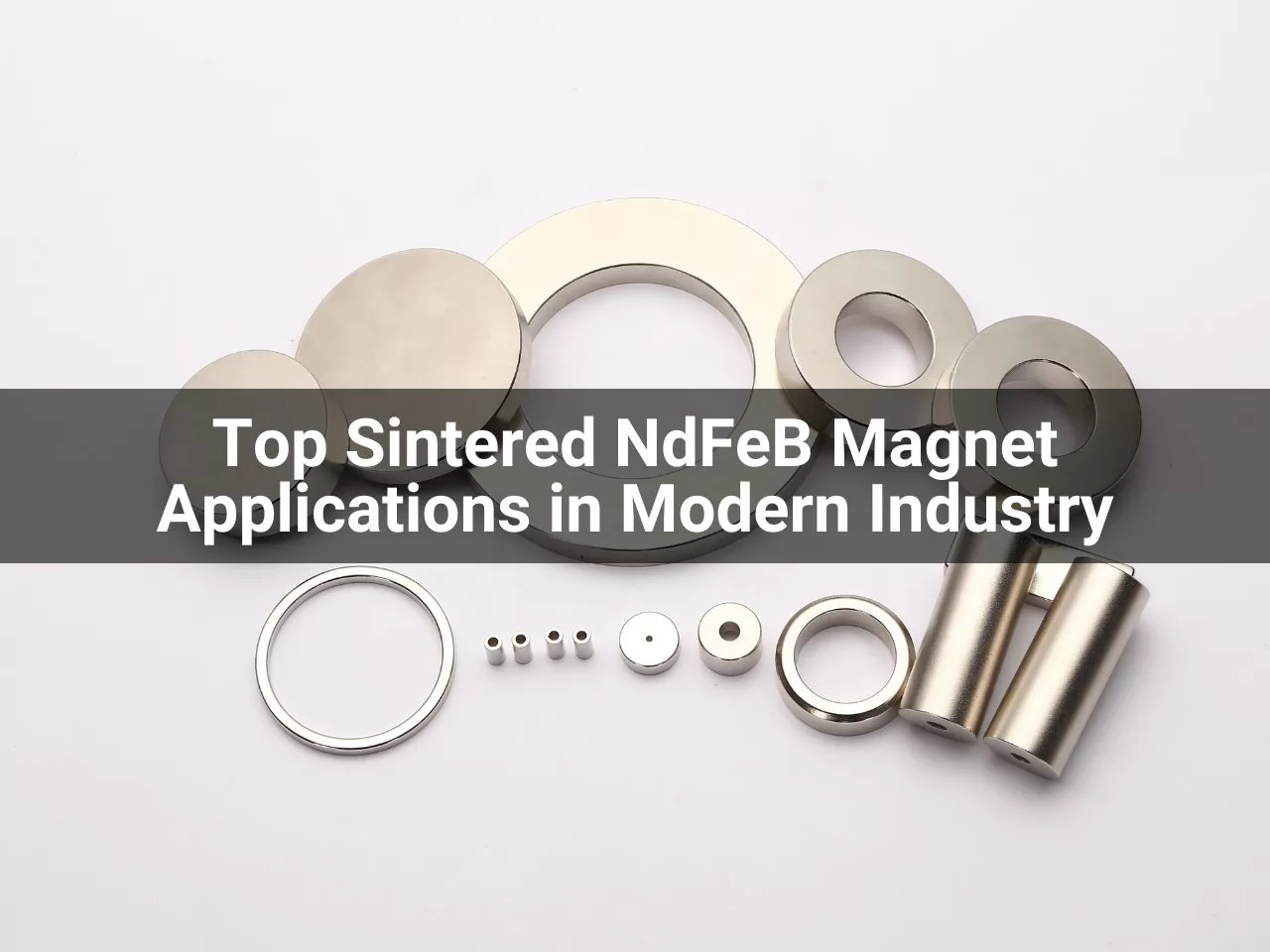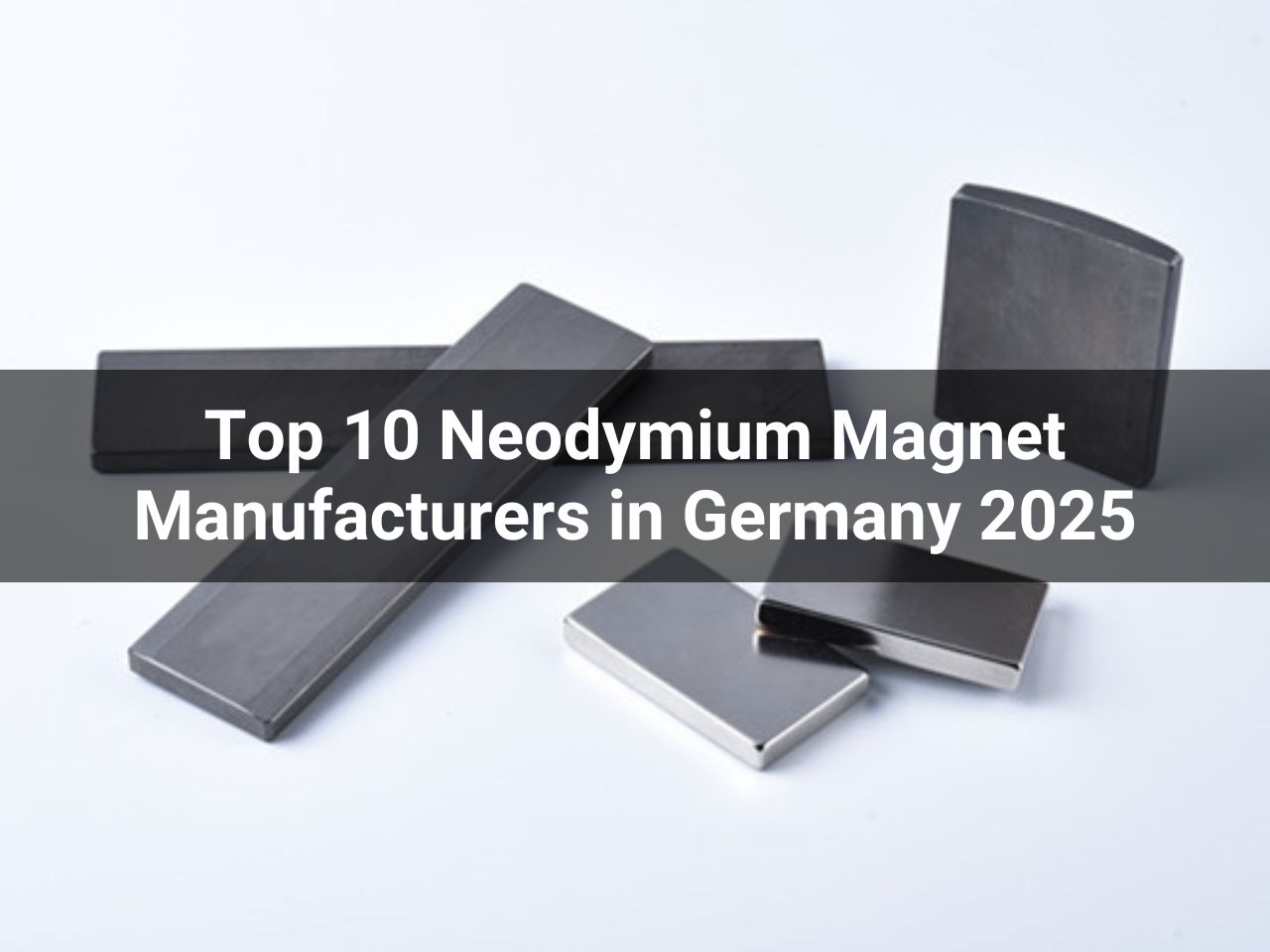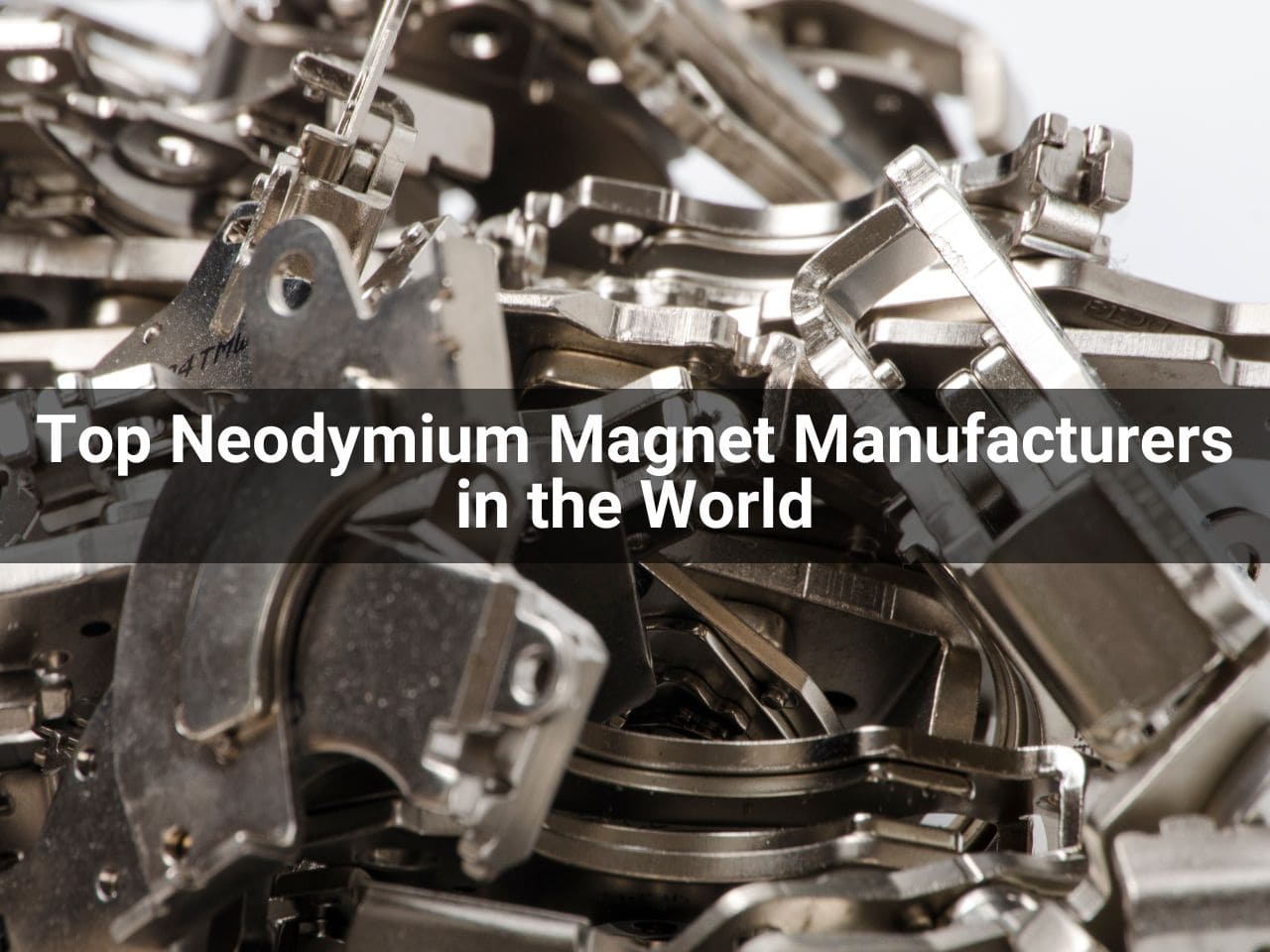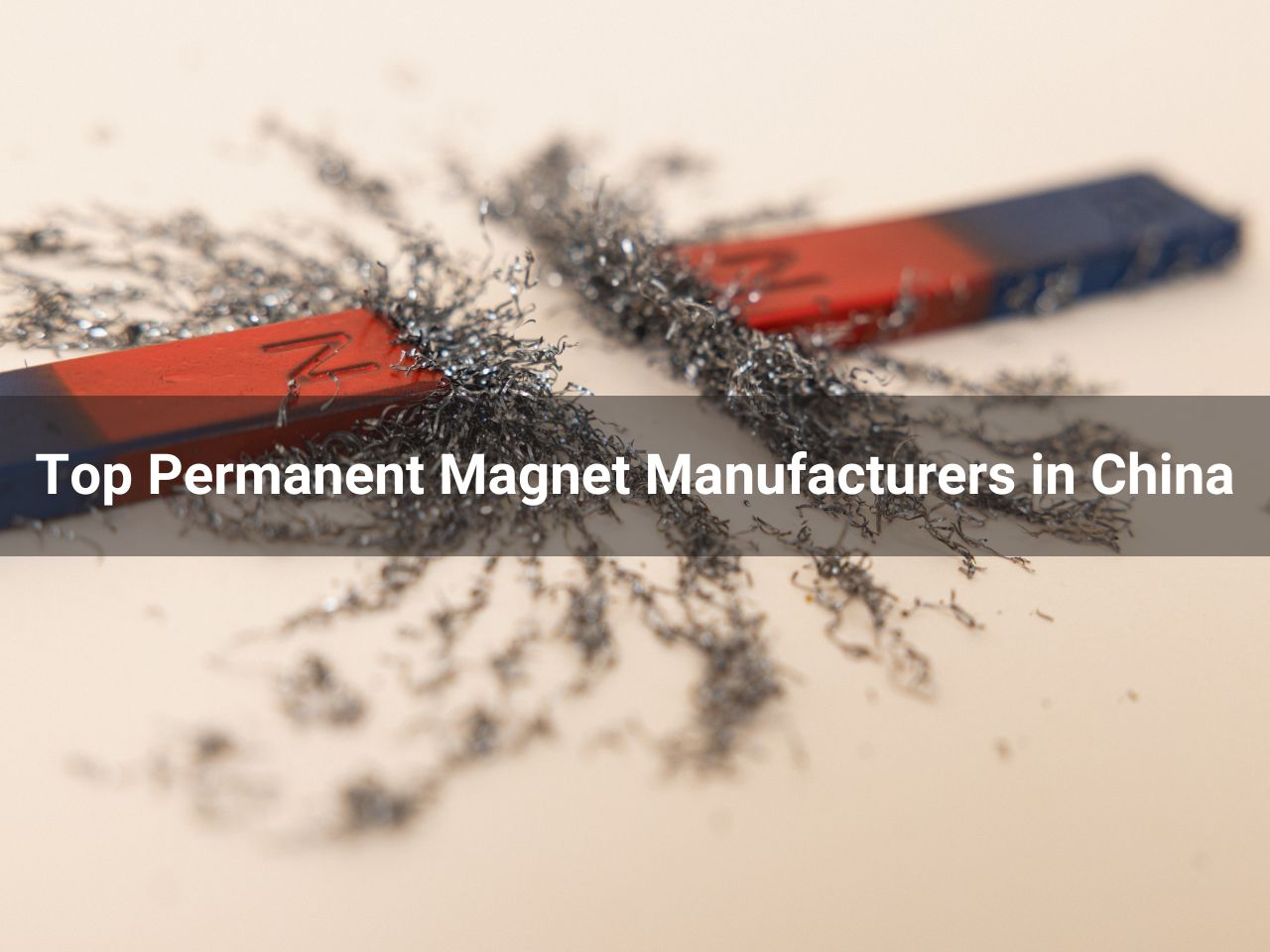In today’s rapidly advancing technological world, magnets are more than just simple tools; they are the backbone of many high-tech industries. Among the most powerful and widely used types of magnets are sintered NdFeB magnets (neodymium-iron-boron magnets). Known for their exceptional magnetic properties, these magnets play a crucial role in various applications across different industries. In this article, we will explore the top 10 sintered NdFeB magnet applications in modern industry, showcasing their versatility, efficiency, and how they are shaping the future of technology.

Core Applications
1. Electric Motors and Generators
One of the most prominent applications of sintered NdFeB magnets is in electric motors and generators. These magnets are essential for the operation of motors in electric vehicles (EVs), industrial machinery, and renewable energy systems like wind turbines. Their high energy density allows for smaller, lighter motors without sacrificing power. This is particularly important in the electric vehicle industry, where reducing weight and increasing efficiency are key priorities. NdFeB magnets are also integral to modern generators, improving their performance and reliability while lowering energy consumption.
2. Magnetic Resonance Imaging (MRI) Systems
Another vital application of sintered NdFeB magnets is in Magnetic Resonance Imaging (MRI) systems. These medical devices rely on strong and stable magnetic fields to generate detailed images of the internal structures of the human body. NdFeB magnets offer the necessary magnetic strength and stability required for MRI scans, enabling doctors to diagnose conditions with higher precision. The use of NdFeB magnets in MRI technology has revolutionized the field of medical imaging, offering clearer, more accurate results.
3. Motors for Electric Vehicles (EVs)
As the world shifts toward more sustainable energy solutions, electric vehicles (EVs) have become increasingly popular. NdFeB magnets play a crucial role in the development of EV motors. Their high magnetic strength contributes to more efficient motors, which in turn leads to longer battery life and better performance. Since NdFeB magnets can be used to produce powerful, compact motors, they help reduce the overall weight of EVs while maximizing energy conversion efficiency.
4. Wind Turbine Generators
In the field of renewable energy, sintered NdFeB magnets are indispensable in wind turbines. These magnets are used in the generators that convert wind energy into electricity. The high energy density of NdFeB magnets allows for more compact and efficient turbine generators, which are essential for generating more power in smaller wind turbine designs. As the demand for clean energy continues to rise, the role of NdFeB magnets in wind turbines will only increase, helping to reduce the global reliance on fossil fuels.
5. Computer Hard Drives
In data storage technology, sintered NdFeB magnets are used in computer hard drives (HDDs) to read and write data. The magnets in HDDs help move the read/write heads over the spinning disk, allowing for the retrieval and storage of data. These magnets enable hard drives to function with precision and speed, which is crucial for the performance of computers, servers, and data centers. The strength and stability of NdFeB magnets help maintain the reliability and efficiency of data storage devices.
6. Magnetic Sensors and Actuators
Magnetic sensors and actuators rely heavily on NdFeB magnets to operate accurately and efficiently. These components are used in a wide range of industries, including robotics, automotive systems, and industrial automation. NdFeB magnets are employed in sensors to detect and measure changes in magnetic fields, while actuators use magnets to convert electrical energy into mechanical motion. The precision and reliability of NdFeB magnets make them ideal for these applications, which are crucial for the development of smarter, more efficient technologies.
7. Magnetic Separators
Magnetic separators are used in industries like mining, recycling, and food processing to separate magnetic materials from non-magnetic ones. Sintered NdFeB magnets are employed in these separators due to their ability to generate powerful magnetic fields capable of attracting even the smallest metal particles. In the mining industry, for example, NdFeB magnets are used to extract iron ore or remove contaminants from other materials. The high efficiency and reliability of NdFeB magnets in these applications make them an indispensable tool for improving productivity and quality control.
8. Headphones and Audio Devices
In the consumer electronics industry, sintered NdFeB magnets are widely used in headphones and audio devices to produce clear, high-quality sound. The magnetic strength of NdFeB magnets is crucial for driving the speaker cones, allowing for a more dynamic range of sound. These magnets contribute to making audio devices smaller, lighter, and more efficient without compromising sound quality. Whether in wireless headphones or high-fidelity speakers, NdFeB magnets are an essential component for delivering superior sound experiences.
9. Robotics and Automation
The use of NdFeB magnets in robotics and automation is rapidly growing. These magnets are used in robotic motors, actuators, and sensors, enabling robots to perform precise movements and tasks. The strength and compactness of NdFeB magnets allow robots to operate with greater efficiency and flexibility, whether in industrial settings or research applications. As robotics continues to advance, NdFeB magnets will play a key role in enabling faster, more precise automation technologies.
10. Magnetic Levitation (Maglev) Systems
Lastly, magnetic levitation (Maglev) systems, such as those used in high-speed trains, depend on the powerful magnetic fields generated by NdFeB magnets. These systems allow for frictionless movement, enabling trains to reach unprecedented speeds while maintaining stability and safety. NdFeB magnets are integral to the design of Maglev trains, helping them achieve higher speeds with lower energy consumption. This technology has the potential to revolutionize transportation by reducing travel time and environmental impact.
Frequently Asked Questions
Q1: What is the difference between sintered NdFeB magnets and bonded NdFeB magnets?
Sintered NdFeB magnets are made through a sintering process, where powdered neodymium, iron, and boron are fused under high pressure and heat to create a strong, dense magnet. Bonded NdFeB magnets, on the other hand, are made by bonding the powder with a polymer resin, resulting in a magnet that is more flexible but less powerful than sintered magnets.
Q2: How do NdFeB magnets improve electric vehicle efficiency?
NdFeB magnets improve EV efficiency by enabling smaller, more powerful motors that require less energy to operate. Their high energy density allows for lightweight, compact motors that still deliver excellent performance, which helps increase driving range and reduce energy consumption.
Q3: Are NdFeB magnets eco-friendly?
While NdFeB magnets are highly efficient and help reduce energy consumption, the production process does involve the use of rare earth elements, which can have environmental impacts. However, the recycling of NdFeB magnets is becoming more common, reducing the need for raw materials and minimizing waste.
Q4: How long do NdFeB magnets last in industrial applications?
NdFeB magnets are highly durable and can last for many years, depending on the environment they are used in. They can withstand high temperatures and harsh conditions, but their performance may degrade in extreme environments or if they are exposed to strong magnetic fields over long periods.
Q5: Can NdFeB magnets be recycled?
Yes, NdFeB magnets can be recycled. In fact, recycling NdFeB magnets is becoming increasingly important for reducing the environmental impact of rare earth mining. Specialized processes can recover the valuable neodymium and other elements in these magnets, making them suitable for reuse in new products.
Conclusion
Sintered NdFeB magnets are some of the most powerful and versatile magnets available, and their applications span across many industries, from renewable energy to healthcare to consumer electronics. As technology continues to evolve, the demand for these magnets will only increase, helping to drive innovations in energy efficiency, automation, and transportation. If you are involved in any industry that relies on advanced magnetic technology, understanding and utilizing NdFeB magnets can help you stay at the forefront of innovation. For more information or to explore how NdFeB magnets can benefit your business, feel free to reach out to industry leaders in magnetic solutions.
Related Articles




.png)




















